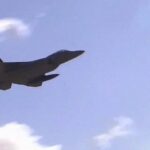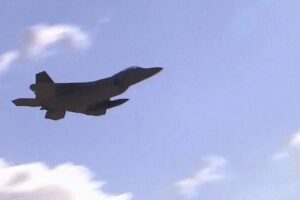Taipei [Taiwan], May 6 (ANI): Seven People’s Liberation Army (PLA) aircraft, one anti-submarine helicopter (Ka-28) entered Taiwan’s southwest air defence identification zone (ADIZ) on Friday, according to the Ministry of National Defense MND, reported Taiwan News.
The Ministry of National Defense (MND) tracked them around Taiwan between 6 am on Friday (May 5) and 6 am on Saturday (May 6).
In response, Taiwan sent aircraft and naval ships and used land-based missiles to monitor the PLA aircraft and vessels, reported Taiwan News.
So far this month, Beijing has sent 74 military aircraft and 27 naval vessels around Taiwan. Since September 2020, China has increased its use of grey zone tactics by routinely sending aircraft into Taiwan’s ADIZ.
Grey zone tactics are “an effort or series of efforts beyond steady-state deterrence and assurance that attempts to achieve one’s security objectives without resorting to direct and sizable use of force.”
In response to Taiwanese President Tsai Ing-wen’s stopover in California and meeting with US House Speaker Kevin McCarthy on 5 April, China upped the ante with a series of military aircraft manoeuvres designed to psychologically intimidate Taiwan.
At first, Beijing’s response to the meeting was muted, promising “joint inspection patrols” by a Maritime Safety Administration vessel. This was followed by two live-fire exercises off the coast of Pingtan and Fuzhou.
Salami slicing and grey-zone tactics are China’s regular modus operandi, but its actions are becoming ever more robust and blatant as China narrows Taiwan’s room for manoeuvre and psychologically bludgeons it.
There are more overt measures in its toolkit that China has not yet taken. Seizing outlying islands such as the Pratas would enable China to extend control over territory held by Taiwan.
Yet this would be a higher risk than what China did in the South China Sea when it militarized unoccupied low-lying reefs and turned them into bases. Other potential actions include cyberattacks and targeting civilian infrastructure.
Far more violent would be missile bombardments or maritime, air and information blockades. Beijing could use them to force Taiwanese leaders to the negotiating table, or to set conditions for a military invasion. The ultimate military option for China would be a full-scale amphibious invasion.
However, there are only a few beaches in Taiwan where such landings are possible, and only certain times of the year when the waters of the Taiwan Strait are sufficiently calm. (ANI)
Source : ANI















